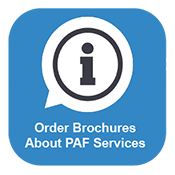Differences in Insurance Plans Can Impact Your Health Care Concerns
In Affordable Care Act (ACA) compliant plans, you cannot be dropped, turned down, or charged more for health insurance because you have a health-related problem. But comprehensive insurance plans can have many costly differences, based on how they structure four key areas: deductible, networks, drug tiers, and formulary.
1. Deductible, Co-Pays, and Co-Insurance
These are the out-of-pocket costs or cost-sharing amounts which you will pay. To help you estimate these costs, make a list of the recurring medical expenses, including medicines, check-ups, physical therapy, and other procedures that can be planned in advance (such as knee replacements). If you have chronic disease, it’s worthwhile to review your “Explanation of Benefits” statements and overall medical costs. These records will help you to anticipate and better estimate potential costs during the enrollment period when choosing a plan.
2. Network
Insurance companies negotiate service costs with providers each year to get the best rates. That’s why visits to out-of network providers can be very costly. Always make sure your favorite doctors and hospitals are part of the network (it is always a good idea to check with the provider too). Remember that you may see changes as doctors and hospitals are dropped or added to the network during the year.
3. Drug Tiers
The formulary (drug list) sorts medications into tiers. The tier placement determines how much you have to pay for the medication. Most plans have 4 or 5 tiers, with “preferred” and “non-preferred” groups designed to encourage you to choose less expensive medications. The higher the tier, the higher your costs will be. “Specialty drugs” tend to be the most expensive, and may require you to have tried other options first. Compare which tiers your medications fall into on the different plans you are considering and choose the one that maximizes your benefits and gives you the most overall savings.
4. Formulary
Many people with chronic disease take multiple medications to manage the condition as well as to prevent other complications. Check to see that medicines you need are included (this list is called the formulary), but be aware the formulary can change during the plan year—drugs can be removed or added with or without restrictions, and coverage levels may change throughout the year as well. If the drug is not listed on the formulary,the insurance company will not pay anything towards its cost.










